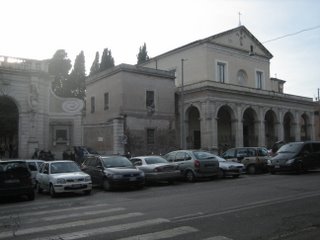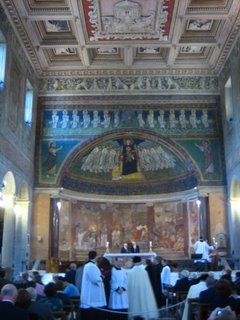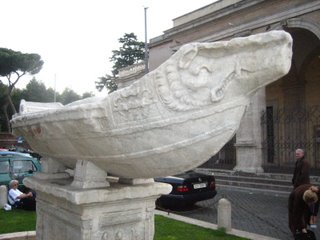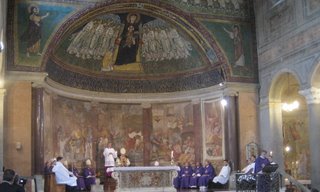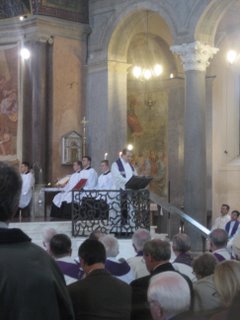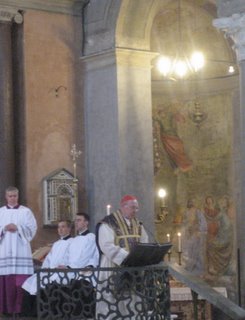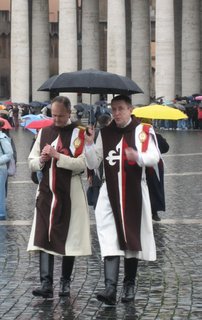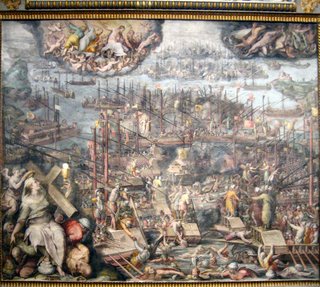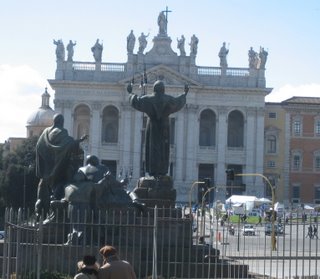A Shakespeare First Folio that has been hidden in one of Britain's most esoteric libraries for almost 300 years is to go under the hammer with the possibility of threatening the world record price for any book sold at auction.And in the Times:
Sotheby's said yesterday that the 950-page volume, on which it has put a £2.5 million to £3.5 million estimate, is the best example of a First Folio edition to reach the market in 60 years. To whip up interest from international buyers, it will take the book on a world tour before the sale in London in July.
Only 18 of Shakespeare's plays were published in his lifetime and it was not until 1623, seven years after his death, that the so-called complete works - a total of 36 plays - appeared in what is now known as the First Folio.
Some 750 copies were printed - and sold for a guinea - but today only a third survive.
(snip)
Sotheby's edition also has an extraordinary history, and appears never to have left London. It belongs to Dr Williams's Library, the country's pre-eminent deposit of puritan, Protestant non-conformist and dissenting books and manuscripts, founded in the early 18th century from a bequest of books, including the First Folio and a £50,000 endowment by Dr Daniel Williams, a prominent 17th century dissenting minister.
The library, now in Gordon Square in central London, has 300,000 titles but only 1,000 members and says that it receives no public funding and needs to sell its most valuable asset to secure its future. Insuring the First Folio accounts for one third of its annual premiums.
(snip)
A copy of the First Folio might not seem an obvious choice of reading matter for a fire-and-brimstone Nonconformist - after all, Cromwell's Puritans banned all stage performances from 1642 until the Restoration.
Dr Wykes said Dr Williams had a strong interest in literature as well as religion and his bequest had included plays by Ben Jonson and John Dryden.
It is believed that Dr Williams bought the First Folio and a complete library from a fellow Nonconformist minister, Dr William Bates, for £500.
The volume is in its original mid-17th century binding and has the extra attraction of numerous notations. An unknown scholar, probably in the mid-17th century, has underscored or marked hundreds of lines. His work appears to have been erratic.
He made 380 markings by Henry VIII, several dozen by each of the other plays, but not one on The Merry Wives of Windsor.
CHAIRMAN MAO’S stern features are to gaze out over Tibet for the first time.
A huge statue of Mao Zedong, whose Red Armies entered the deeply Buddhist Himalayan region in 1951 to extend Communist Party rule, is to stand in a newly built square in the town of Gongga.
The 7.5m (24½ft) figure, weighing 35 tonnes, is a gift to the small Tibetan town just south of the regional capital, Lhasa, from the central Chinese city of Changsha, where Mao was born.
One government official explained the gift, worth 6.5 million yuan (£465,000): "Tibet does not need only material development, it must also meet the more spiritual needs of its people."
The statue was designed by Zhu Weijing, president of the Changsha Sculpture Institute. He has created a whole new image of the late chairman that will be unique to Tibet, with his features made to look more like those of Buddha.Mao’s newest statue wears a traditional Mao suit. However, Mr Zhu has changed his posture. "I noticed that he liked standing with both hands behind his back. It made him look more intimate and more easygoing." His features, too, have been altered to suit his Tibetan audience. Mr Zhu said: "I tried to understand how Tibetans feel towards Mao. Because they have deep feelings about Buddha, I tried to make Mao more like that, with a plumper face."
